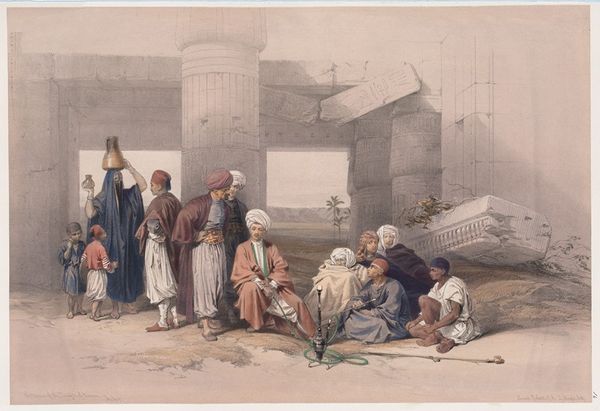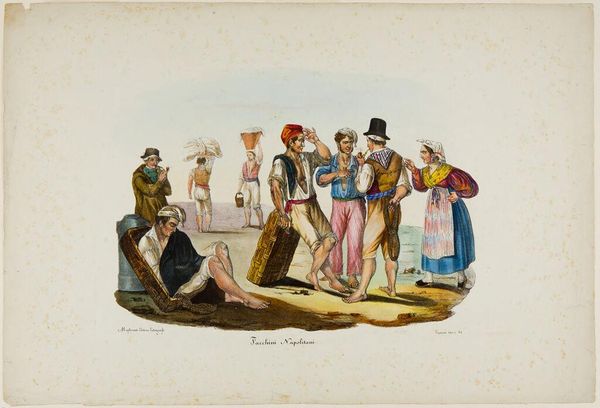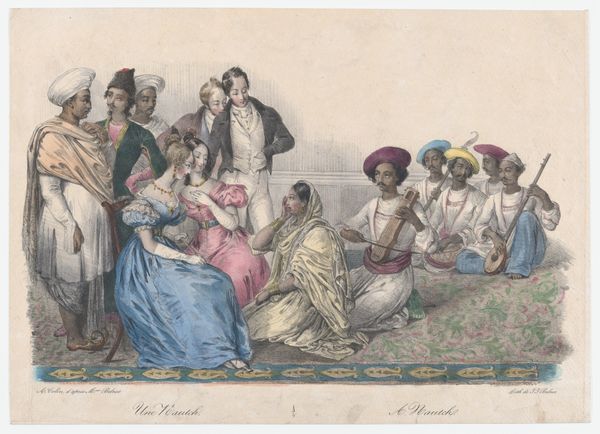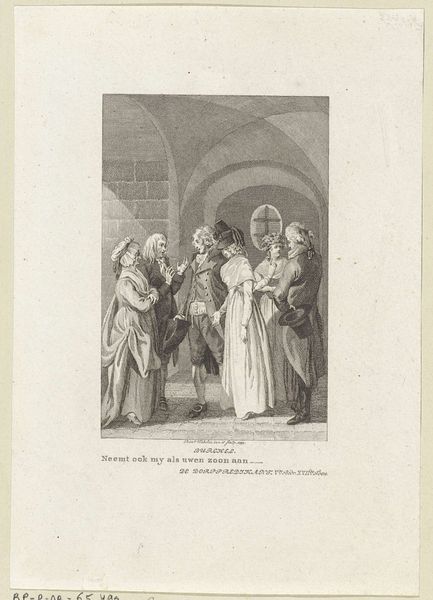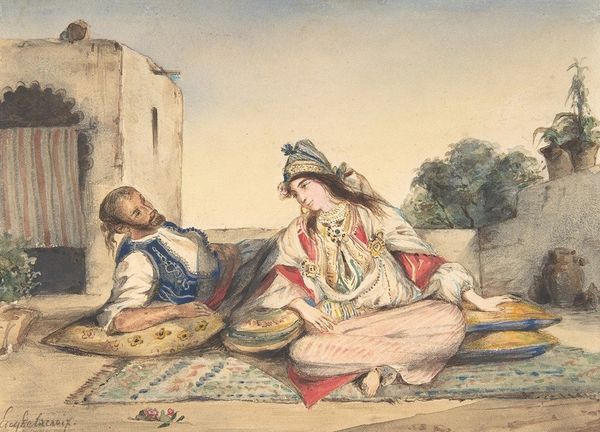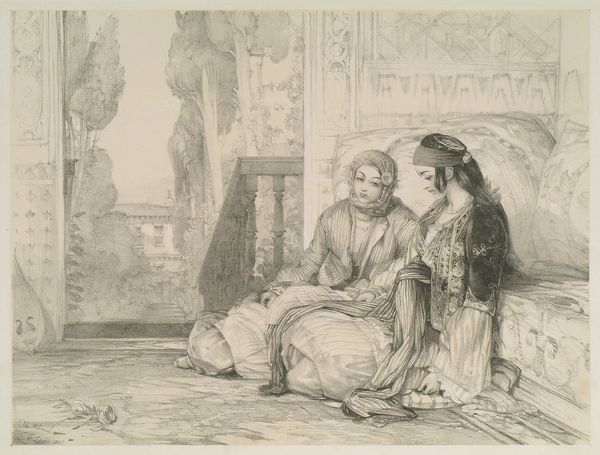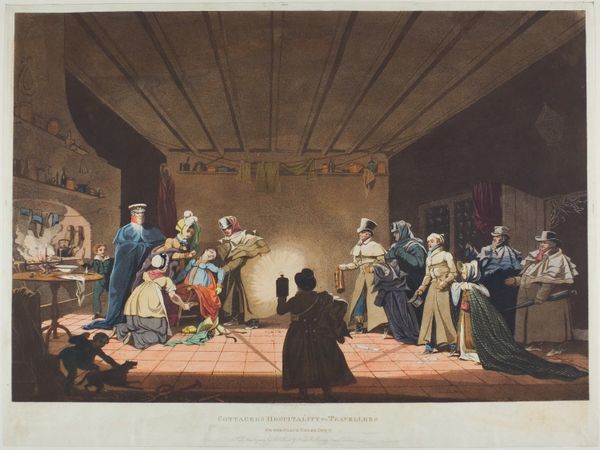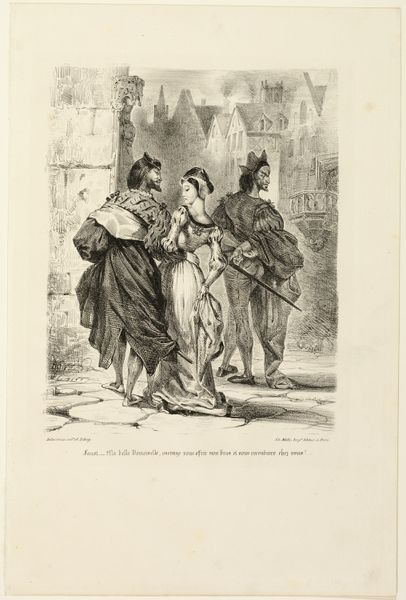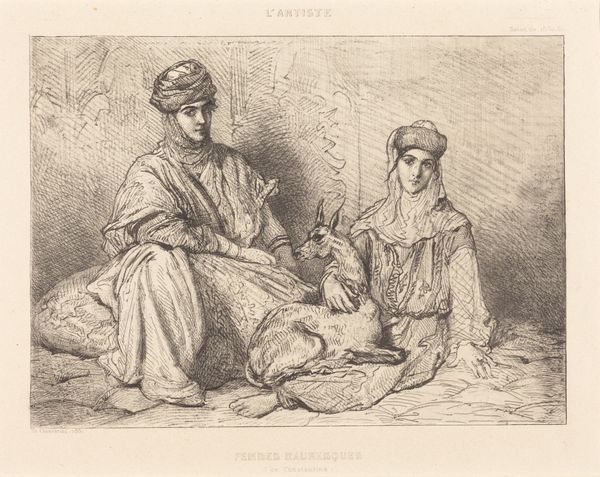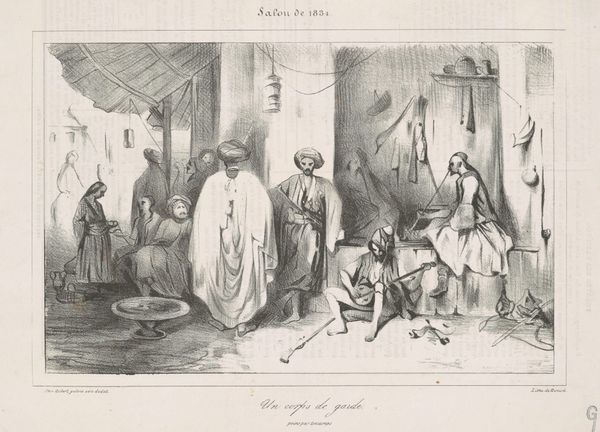
watercolor
#
figurative
#
landscape
#
figuration
#
oil painting
#
watercolor
#
orientalism
#
watercolour illustration
#
genre-painting
#
academic-art
#
watercolor
Copyright: Public Domain: Artvee
Curator: This watercolor titled "Dancing girls at Cairo" was created between 1846 and 1849 by David Roberts. The artist uses a watercolor to capture what appears to be a performance inside an interior space. Editor: The light seems very calculated; almost bleached out to enhance detail rather than evoke any kind of authentic feeling. It seems, perhaps, idealized, don't you think? Curator: The scene presents a look into leisure practices of the time, with dancers and musicians creating a form of spectacle. It's significant to acknowledge the exoticising gaze inherent in orientalist representations. Roberts' meticulous detailing speaks volumes about production meant for consumption, reflecting the economic exchanges of the era. Editor: The symbols—musical instruments, costumes, the bottles on the side table—carry heavy cultural baggage. The dancers evoke imagery of female servitude and sensuality. But there is also an undeniable expression of freedom, a movement within the lines; could that gesture to other possible readings beyond the obviously colonial readings? Curator: Absolutely. The materials themselves tell a story. Watercolor allowed for the easy duplication and dissemination of these images. Prints were sold, driving an industry that exoticized other cultures while solidifying European dominance. I can see a relationship with fashion in how Roberts rendered fabric to convey a sense of realism but with attention to how that was tied into imperial ideology. Editor: Ultimately, aren't these paintings about how the West imagined the East, and not really the reality of daily life in Cairo? The very deliberate display—each gesture, each item so specifically rendered—it constructs and confirms prejudices more than presenting insights. Curator: I agree, and recognizing this can inform modern practices; We can actively work to decolonize museums' art collections by unpacking colonial gaze as presented in artworks like this. Editor: And understanding that can free up different, modern engagements with its themes.
Comments
No comments
Be the first to comment and join the conversation on the ultimate creative platform.
